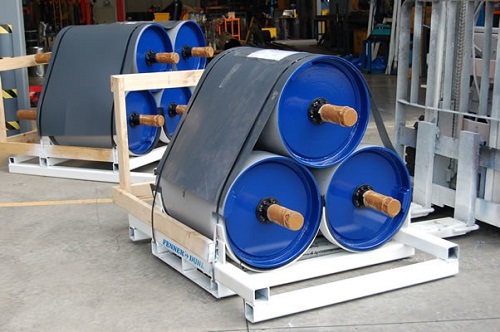
Conveyor units, like every other piece of equipment, need to be carefully taken care of and serviced.
The
typical problems you ought to be aware of in regards to conveyor
machines normally include loss of oiling, contamination, very poor
take-up modification, absolutely wrong timing, and broken off conveyor
parts.
If you have any inquiries with regards to the place and how to use panel maker, you can call us at the web-site.
The
extensive use of conveyor machines by many industries is testament to
the productivity and cost efficiency that they provide. However, as with
every equipment, conveyors systems are only able to do so much and for
so much time. This has a natural lifespan and therefore will not be
protected from obsolescence.
Furthermore, even before the
conveyor system becomes outdated, regardless of whether as a consequence
of new more reliable conveyors systems that end up being available on
the current market or perhaps because of failures and breakage, natural
wear and tear leads to a major increase in efficiency of the equipment.
In order to fight deterioration, it really is very important that proper care and maintenance be given to any conveyor machine.
Several
of the most widespread problems in any conveyor machine may include
loss of lubrication, contamination, poor take-up adjustment, timing, and
busted conveyor parts.
Loss of lubrication – Lubrication is very
critical in any appliance. Bearings of any conveyor must always be oiled
routinely, especially the parts which might be in contact with very hot
temperature conditions (i.e. move through cookers, and so on.).
The reason behind this is that the high temperature dries the system quicker, therefore requiring constant or frequent and regular oiling. With out correct lubrication, conveyor units bog down much more readily as a result of the added tension that rubbing can bring.
Contamination – Contamination is extremely straightforward to deal with however is still the top origins regarding breakdowns in a conveyor machine. Contaminants typically come about from the same merchandise which go through the actual conveyor unit, which explains why they may be very easily disregarded.
Regular inspection need to be carried out to
make certain the tools are free of charge from any kind of products
deposits as well as damaged merchandise pieces. Frequent contaminants
that will lead to disorders can include powders, broken glass, acid, and
so forth.
Should the environment wherein the actual conveyors
machine is situated causes it to be vulnerable to contamination, it is a
very good strategy to close off the equipment shrouds such as plastic
or maybe tents.
Take-up adjustment – The take-up adjustment appears to be an extremely insignificant role of the conveyor system so it finally ends up being ignored time and once again, bringing about drooping or long chains which subsequently results in jamming or chain surging. Very poor take-up adjustment can be another setback with regard to conveyor belt systems because this leads to a twisting of the belts, that can trigger shattered drive units or belts slipping off.
The remedy for the predicament is in reality simple: to tighten the take-up springs on a regular basis.
Timing
– For entirely automatic, or largely automated, conveyor systems timing
is extremely important, especially if perhaps the actual conveyor
system is a sophisticated 1. Frequent examinations in order to make sure
that all the the different parts of the conveyor machine, such as the
belts themselves, are proceeding at the correct speed is vital.
In the event a portion of the conveyor machine is out of sync with the rest of the system, complications . particularly jamming and item rejects can easily take place. For example, if your conveyor machine is put to use for labelling containers, a change in timing relating to the flow of the containers and therefore the content label sticker will most likely produce out of line labels.
This may lead to a great deal
of waste given that the actual product labels need to be taken out,
trashed, and also the whole batch of jars relabelled.
Faulty conveyor
parts – Each and every conveyor machine should certainly be frequently
physically checked out to help make certain that there will be no worn
out pieces. Some indications of worn out conveyor elements include
incorrect timing, very poor take-up modification, plus a complete bog
down of the apparatus.
Nevertheless, even before such signs or symptoms show up, certain components may already be defective or are already distorted or have tiny fractures that can sooner or later trigger damage. Simply by doing regular examinations, these types of components could be renewed even before they damage the conveyor’s functioning.
Quite simply put, the key ingredient to the correct care and repairs and maintenance to virtually any conveyor machine is regular and methodical inspections of the entire machine. Much more special attention may be needed of areas which cause very common complaints, but inattention to even just one particular seemingly unimportant element can result in loss in output and perhaps eventual breakdown of the apparatus.








